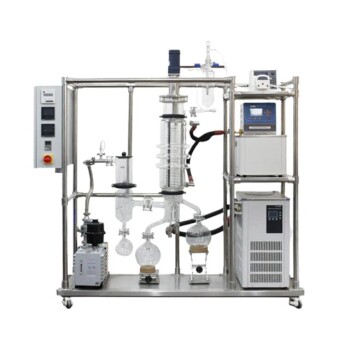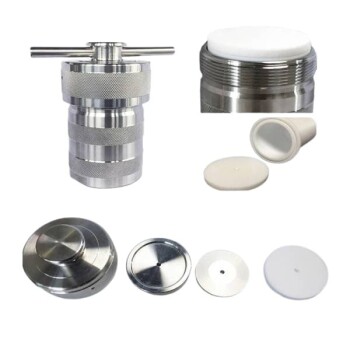Pyrolysis is a thermochemical process where organic materials are heated to high temperatures in the absence of oxygen, causing them to decompose into smaller molecules. This process breaks down long-chain molecules into gases, liquids, and solids, which can be used to produce fuels, chemicals, and other valuable products. The term "pyrolysis" originates from the Greek words "pyro" (fire or heat) and "lysis" (separation), reflecting the process of decomposition by heat. It is widely applied to materials like biomass, plastics, tires, and hazardous waste, offering a way to convert waste into useful resources while reducing environmental impact.
Key Points Explained:

-
Definition of Pyrolysis:
- Pyrolysis is the thermal decomposition of organic materials at elevated temperatures (typically 300-900°C) in the absence of oxygen.
- It breaks down long-chain molecules into smaller molecules due to excessive thermal vibration, resulting in gases, liquids, and solids.
-
Etymology of the Term:
- The word "pyrolysis" comes from the Greek words "pyro" (meaning fire, heat, or fever) and "lysis" (meaning separation).
- This reflects the process of separating or decomposing materials through heat.
-
Process Conditions:
- Pyrolysis occurs in an inert atmosphere (absence of oxygen) to prevent combustion.
- The temperature range is typically between 300-900°C, depending on the material and desired products.
-
Products of Pyrolysis:
- Gases (Syngas): Includes hydrogen, carbon monoxide, and methane, which can be used as fuel or chemical feedstocks.
- Liquids (Bio-oil): A mixture of water and volatile organic compounds, used as a renewable fuel or chemical precursor.
- Solids (Bio-char): Carbon-rich materials that can be used as soil amendments, adsorbents, or for carbon sequestration.
-
Applications of Pyrolysis:
- Waste Management: Converts waste materials like plastics, tires, and biomass into valuable products, reducing landfill use.
- Energy Production: Generates syngas and bio-oil, which can be used as renewable energy sources.
- Chemical Production: Provides raw materials for the production of chemicals and fuels.
-
Materials Suitable for Pyrolysis:
- Biomass (e.g., wood, agricultural waste).
- Plastics (e.g., waste plastic, polyethylene).
- Tires (rubber waste).
- Hazardous waste (e.g., medical waste, industrial waste).
-
Advantages of Pyrolysis:
- Reduces waste volume and environmental pollution.
- Produces renewable energy and valuable byproducts.
- Enables resource recovery from non-recyclable materials.
-
Challenges of Pyrolysis:
- Energy-intensive process requiring high temperatures.
- Requires specific conditions (e.g., absence of oxygen) to operate effectively.
- Product composition varies based on feedstock and process parameters.
-
Example: Plastic Pyrolysis:
- Waste plastics are heated in the absence of oxygen, breaking them down into fuel oil, carbon black, and syngas.
- This process helps address plastic waste management issues and generates useful products.
-
Environmental and Economic Benefits:
- Reduces dependency on fossil fuels by producing renewable energy and chemicals.
- Contributes to a circular economy by converting waste into valuable resources.
- Mitigates greenhouse gas emissions by diverting waste from landfills and incineration.
By understanding the simple definition and key aspects of pyrolysis, it becomes clear how this process plays a crucial role in waste management, energy production, and sustainable resource utilization.
Summary Table:
| Aspect | Details |
|---|---|
| Definition | Thermal decomposition of organic materials at 300-900°C without oxygen. |
| Products | Gases (syngas), liquids (bio-oil), and solids (bio-char). |
| Applications | Waste management, energy production, and chemical manufacturing. |
| Materials | Biomass, plastics, tires, and hazardous waste. |
| Advantages | Reduces waste, produces renewable energy, and recovers valuable resources. |
| Challenges | Energy-intensive, requires specific conditions, and variable product output. |
Discover how pyrolysis can transform your waste into valuable resources—contact us today to learn more!








